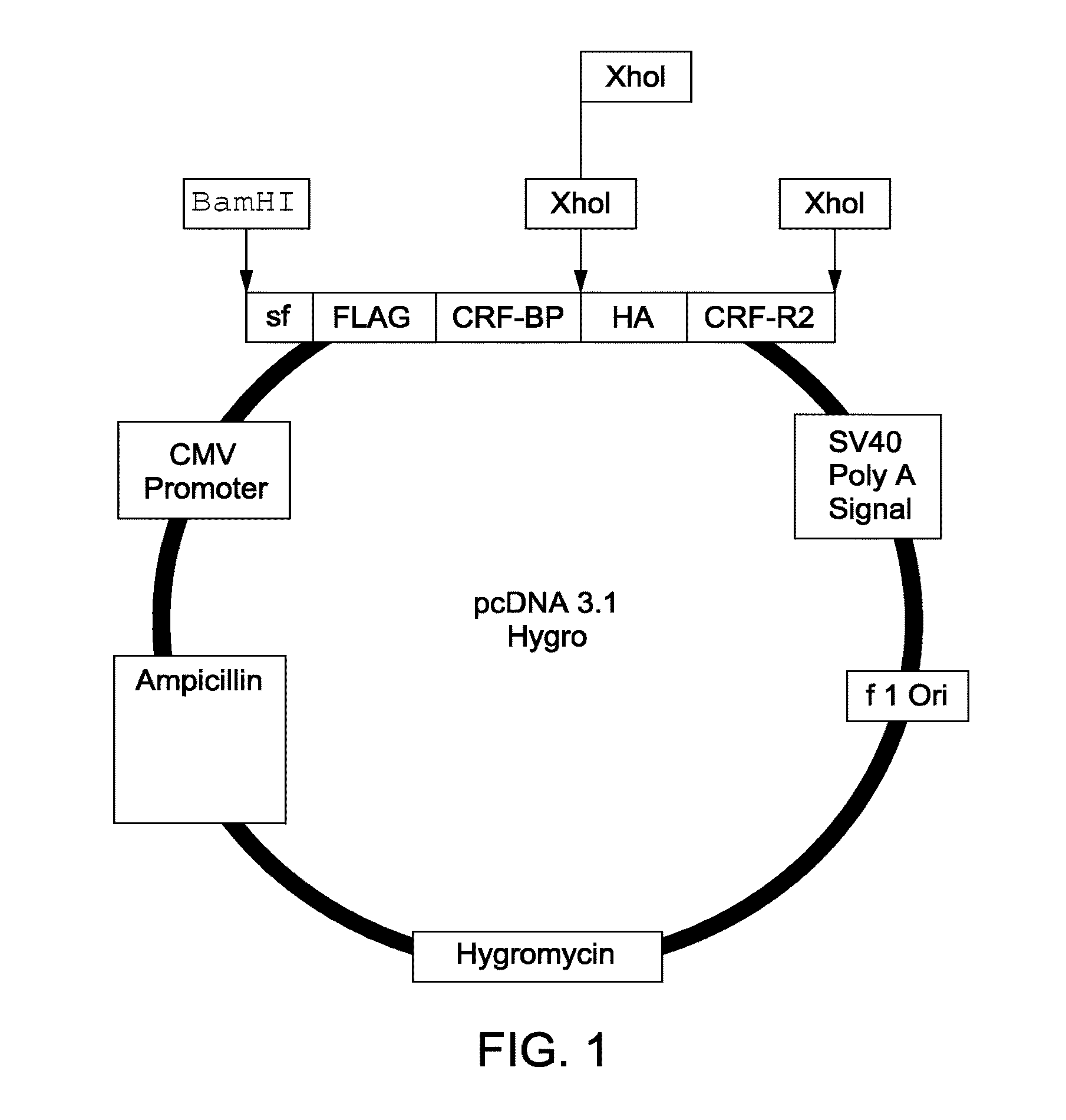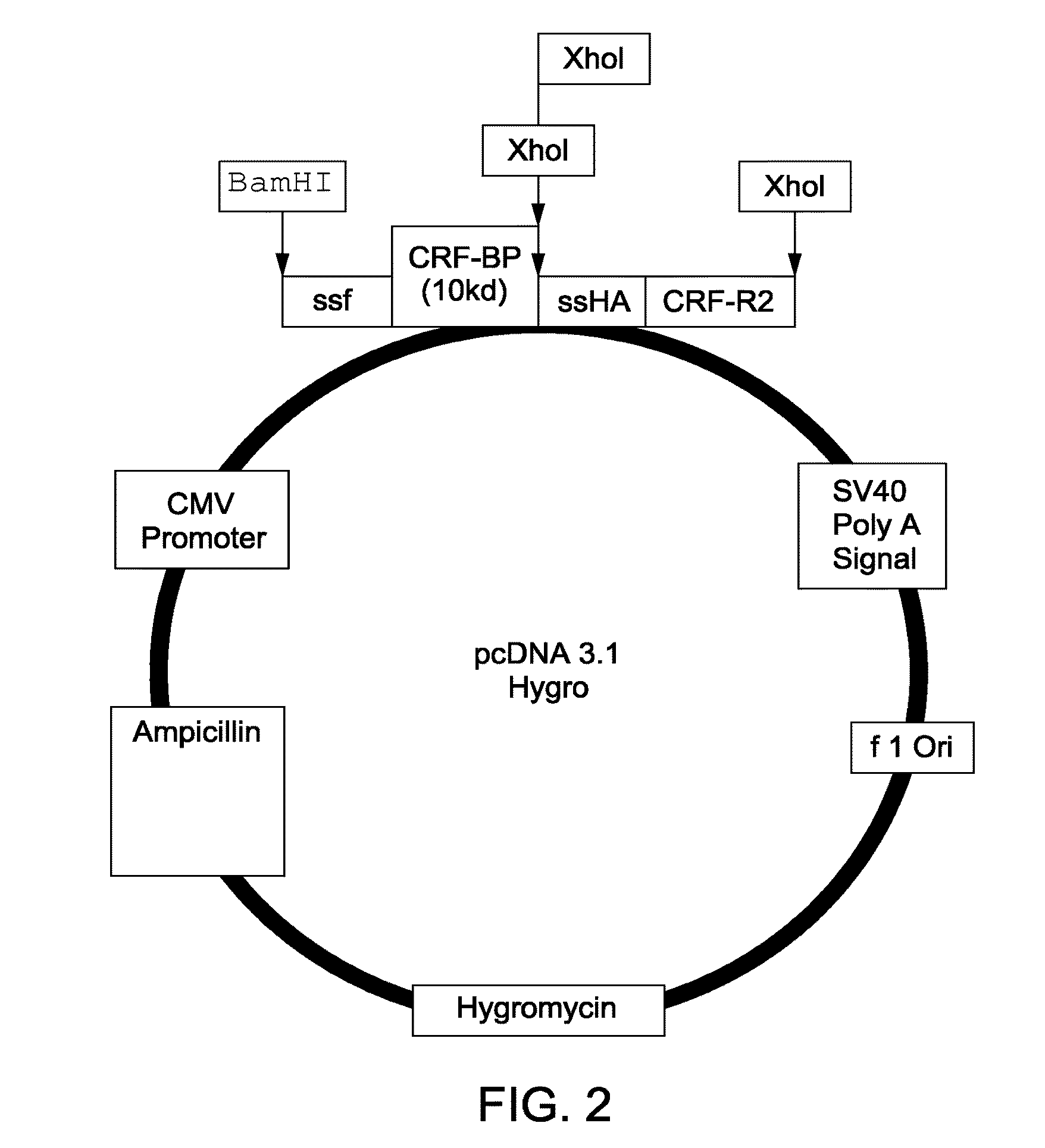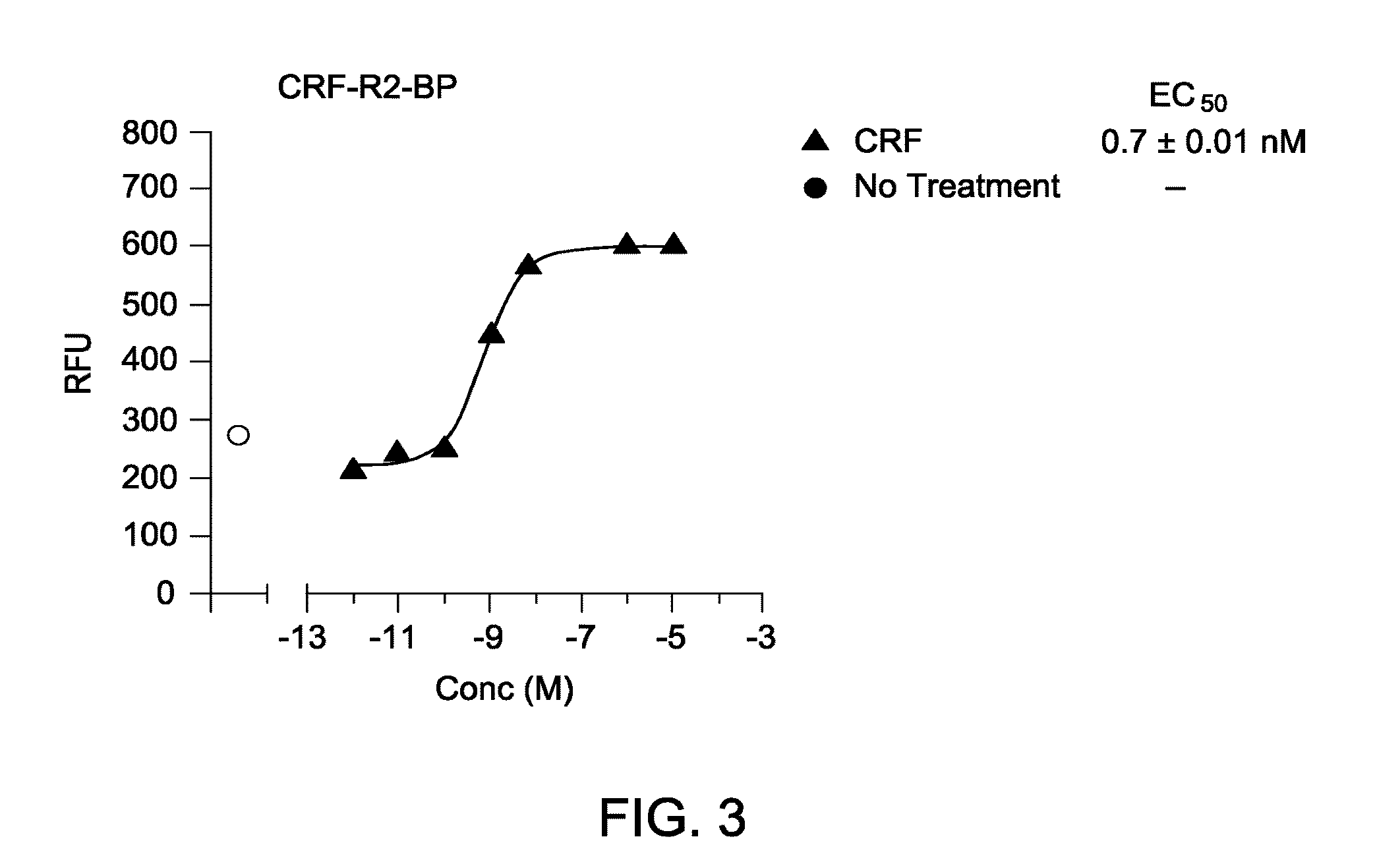Chimera Compositions and Methods of Use
a technology of compositions and chimeras, applied in the field of compositions and research tools for drug discovery, can solve the problems of limited efforts to identify drugs that modify specific gpcr signaling pathway protein complexes, and challenge parts
- Summary
- Abstract
- Description
- Claims
- Application Information
AI Technical Summary
Benefits of technology
Problems solved by technology
Method used
Image
Examples
example 1
Cloning and Production of CRF-BP_CRFR2 Chimeras
[0135]Human CRF-BP_CRFR2 chimeras were produced by initial cloning of the first GPCR peptide and second signaling complex peptide into a pcDNA3.1 vector. The map of the vector produced for the expression of the full-length CRF-BP CRFR2 chimera is shown in FIG. 1. The map of the vector produced for the expression of the chimera comprising a 10 Kd fragment of CRF-BP with CRFR2 is shown in FIG. 2. The CRF-BP (10 Kd) fragment is comprised of 88 amino acid residues (A235 to L322): AGCEGIGDFVELLGGTGLDPSKMTPLADLCYPFHGPAQMKVGCDNTVVRMVSS GKHVNRVTFEYRQLEPYELENPNGNSIGEFCLSGL (SEQ ID NO:1). Construction of these plasmids is as described below.
[0136]A pcDNA13 vector (Invitrogen, Carlsbad, Calif.) was digested with BamHI, and XhoI (NEB, Ipswich, Mass.), and the digested DNA was run on a 1.2% agarose gel at 70 volts for 50 min and the desired fragment purified using a Qiagen (Valencia, Calif.) Gel Extraction Kit.
[0137]CRFBP (FL) fragment was excised u...
example 2
Transfection of Human Cells with the Expression Plasmid
[0145]The plasmids containing the CRF-BP_CRFR2 fusion chimeras were then transfected into HEK 293 cells for expression of the protein, confirmation of the appropriate insertion into the membrane, and functionality of the chimera in mammalian cells.
[0146]One day prior to transfection, HEK 293 cells were placed in a 12 well plate with DMEM with 10% fetal bovine serum (FBS) in each of the wells. Immediately prior to transfection, each well was examined to confirm approximately 90-95% confluency of the cells in the wells. The DMEM was carefully aspirated from the wells, and replaced with fresh DMEM / 10% FBS.
[0147]The final DNA plasmid preparations created in Example 1 were then diluted in 100 μl of Opti-MEM (reduced serum) and gently mixed. Lipofectamine 2000 which had been likewise diluted in 100 μl of Opti-MEM was incubated at room temperature for 5 minutes, and then combined with the diluted DNA. This was mixed gently and incubate...
example 3
Signaling Activation Through the CRF-BP_CRFR2 Chimeras
[0150]The mammalian cells expressing the isolated chimera constructs were tested for the ability of the chimera proteins to activate intracellular calcium release via signaling through Gq. HEK 293 cells of Example 2 expressing the constructs of Example 1 were grown in 10% FBS in DMEM cell media with hygromycin (0.4%) selection reagent. Cells were plated out in 96-well plates (40 000 cells / well) in FBS / DMEM media. On the following day, cells were serum starved (1% FBS in DMEM; 100 μl / well) for 2 hours prior to testing.
[0151]Cells were loaded with diluted FLIPR™ dye (100 μl) for one hour prior to testing with CRF. The selected hygromycin resistant cells were plated in 96-well clear bottom black microplates at a density of approximately 40,000 cells / well, in DMEM / 10% FBS media. One vial of Ca2+ dye (Molecular Devices) was diluted in 10 ml of 1× Washbuffer [10 mL 10× Hank's Balanced Salt Solution, 2 mL HEPES 1 M, 87 mL distilled wate...
PUM
| Property | Measurement | Unit |
|---|---|---|
| total volume | aaaaa | aaaaa |
| total volume | aaaaa | aaaaa |
| total volume | aaaaa | aaaaa |
Abstract
Description
Claims
Application Information
 Login to View More
Login to View More - R&D
- Intellectual Property
- Life Sciences
- Materials
- Tech Scout
- Unparalleled Data Quality
- Higher Quality Content
- 60% Fewer Hallucinations
Browse by: Latest US Patents, China's latest patents, Technical Efficacy Thesaurus, Application Domain, Technology Topic, Popular Technical Reports.
© 2025 PatSnap. All rights reserved.Legal|Privacy policy|Modern Slavery Act Transparency Statement|Sitemap|About US| Contact US: help@patsnap.com



